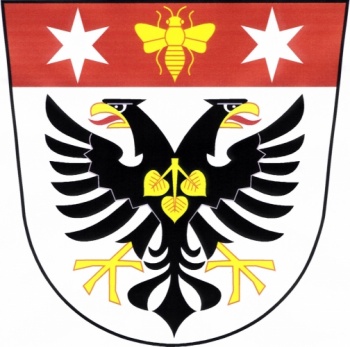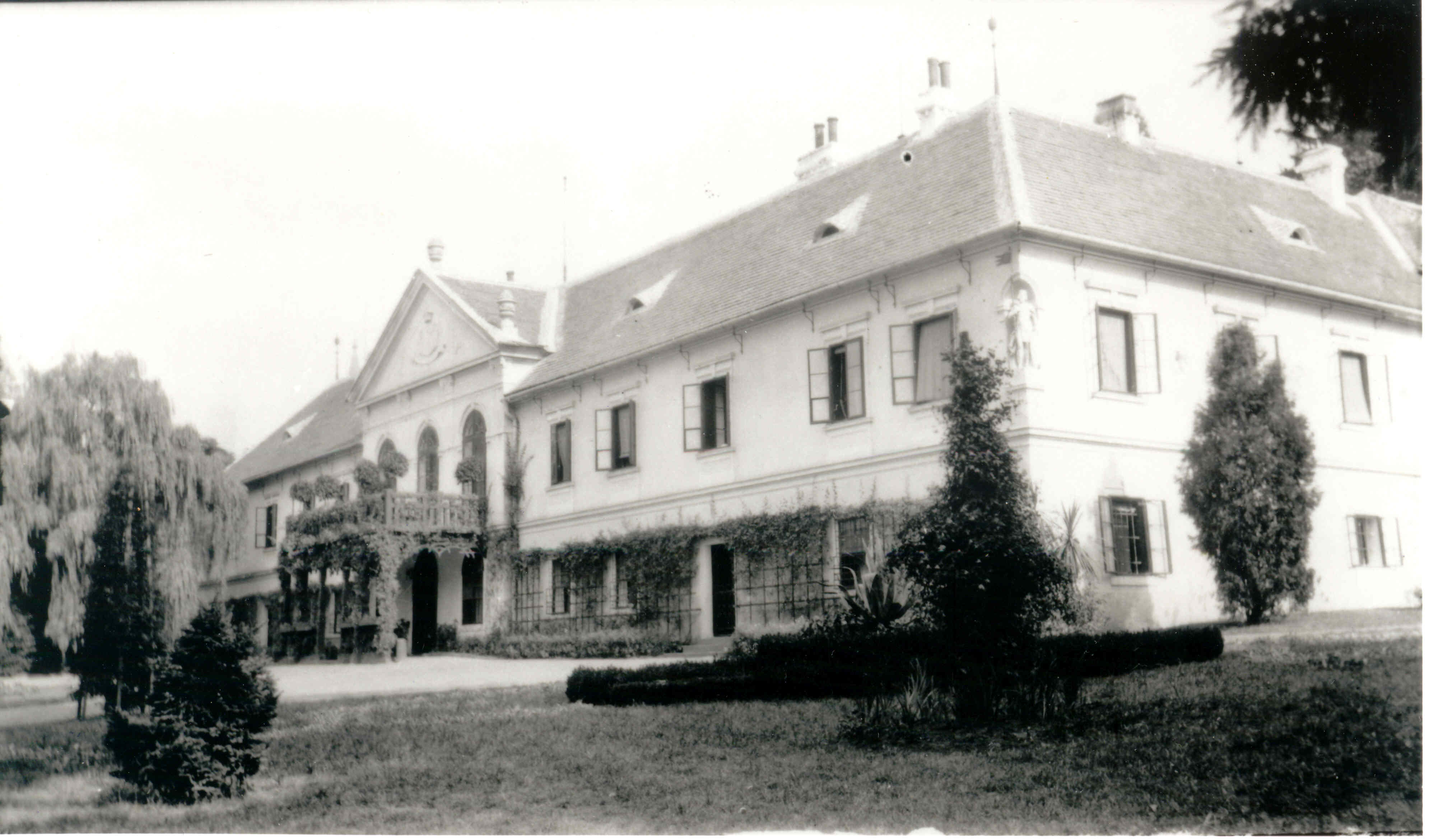BÃlovice (Uherské HradiÅ¡tÄ› District)
Bílovice ( German Bilowitz, formerly Billowitz ) is a municipality in the Czech Republic. It is located eight kilometers northeast of Uherské Hradiště and belongs to Okres Uherské Hradiště.
Geography
Bílovice is located in the northwestern foothills of the Prakšická highlands on the edge of the Natural Park. The village is situated at the confluence of the creek Zlámanecký creek in the Březnice. To the north rises the Štěrky (233 m), the South East Vrchovina (331 m) and the Rovná hora (350 m ) south of the Lovisko ( 349 m ) and in the southwest the Rovnina (336 m).
Neighboring towns are Topolná in the north, Březolupy, Pec pod and Svárov in the northeast, Dubovský Mlýn, Malá Strana and Nedachlebice in the east, Pašovice, Prakšice and Lhotka in the southeast, Hradčovice, Veletiny and Popovice in the south, Mistřice and Jarošov the southwest, Včelary in the west and babice and Spytihněv in the northwest.
History
Archaeological finds indicate a prehistoric settlement of the municipality to the Neolithic period. The present village was probably founded in the 11th century. The first written mention of the episcopal fief Belawiz place in the year 1256th The parish Belawiz was established in the same year, to her were the villages Kněžpole, Mistřice, Topolná, Nedachlebice, Svárov, Javorovec and Zlámanec. Other forms of the name are Belewiz ( 1274), Wielobitz ( 1298 ), Pilowitz ( 1372 ) and Bielowicz ( 1523). Once it was the Hungarian king Matthias Corvinus succeeded during the power struggle for the Bohemian crown on July 27, 1469 in Veseli nad Moravou to capture Viktorin of Podiebrad, pulled his brother Henry the Elder. with an army to Moravia. In July 1470 Henry the Elder suggested. Hruby on the bor - Neráz wood between Bílovice and Mistřice the Hungarians, and pursued them to Uherský Brod. The owners of the domain changed frequently. In 1512, the first time the fortress was mentioned, to which a brewery, a hop garden, a yard, a grist mill with three grinding passes, an oil mill, a manor house, a pond and the woods " Neraz " belonged. 1617, the village was called Bilowicz 1633 as Bilowitz and 1718 Billowitz. After the Lehn was like home after the death of Ignaz Cajetan Breviary, 1809, to the bishopric, was sold the goods to Ferdinand Count Laurencin -Beaufort. His heirs sold Bílovice 1831 Hugo I Logothetti. 1846 Bilowice place was called. Until the mid-19th century Bilowice always remained an independent commodity.
From 1850 formed Bilowice / Bilowitz a municipality in the district team Hradisch. 1854 lived the painter Josef Manes as a guest on Castle Bílovice. 1861 inherited Zdenko and Vladimir Logothetti one half his father's property, and later Vladimir Logothetti bought the share of his brother on. 1866 Prussian troops dragged a cholera, while 28 people died in Bílovice. Since 1872, the present-day city name Bílovice is used. From 1892 Hugh II Logothetti was the owner of the castle. After his death in 1918, took over in 1920, his widow Bedřiška with the children good. The up to the first land reform from 1920 to the estate belonging 290 hectares of land had leased the family Logothetti to the sugar factory Gebrüder May from Staré Město. In addition to the estate included a brickyard. In 1961 Včelary was incorporated into Bílovice.
Community structure
The municipality consists of the villages Bílovice Bílovice ( Bilowitz ) and Včelary ( Wceral, 1939-1945 Zeidelweid ).
Attractions
- Castle Bílovice parking. The original Renaissance structure built in the 16th century from a located at the center of the village old festivals. Later modifications were made in the style of the late Baroque and finally Ferdinand of Laurencin -Beaufort in the Empire style. In the mid-19th century, the castle park was created. From 1831 the castle was in the possession of the Logothetti family that was expropriated in 1945. In 2006, the three-winged single-storey castle was repaired with a U-shaped floor plan and 2010, the park renovated.
- Church of the Birth of John the Baptist, it was built in 1336 in Gothic style. Its present form dates from 1680 through the addition of two chapels.
- Statue group of Sts. John of Nepomuk, Wendelin and Antonius
- Memorial cross on the road to Topolná, the elaborate carved emerged in the second half of the 18th century
- Tomb of the Count Logothetti in the cemetery, it was renovated in 2010
- Stations of the Cross at the cemetery, the frescoes created in 1920 the painter Jan Köhler
- Chapel in Včelary
- Praplečka in Včelary, figure of a " prehistoric wheel " created in 2004

,_celkov%2525C3%2525BD_pohled.jpg)
,_fara.jpg)




-kostel.jpg/280px-B%2525C3%2525ADlovice(UH)-kostel.jpg)
,_h%2525C5%252599bitov,_kapli%2525C4%25258Dky.jpg/640px-B%2525C3%2525ADlovice_(UH),_h%2525C5%252599bitov,_kapli%2525C4%25258Dky.jpg)
